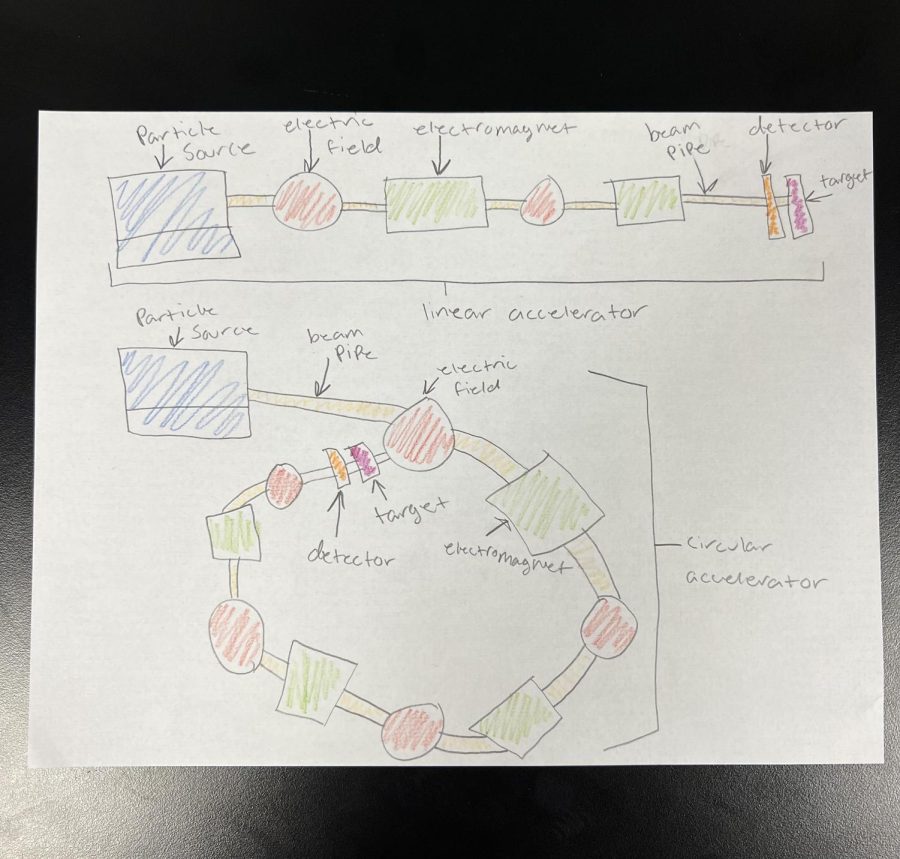The Basics of Particle Accelerators
When one thinks of a particle accelerator, one probably imagines an enormous circular tube stretching for miles that only scientists have a use for. While some particle accelerators are precisely that, most are much smaller and more directly applicable. They vary in size, shape, and application and are far more important than one may believe.
What exactly are PAs (particle accelerators)? A PA is a system of components that generate, accelerate, and sometimes collide various elementary particles (protons, electrons, etc.) into other particles or objects. They range from a mere 3.5 inches in length to 27 kilometers in circumference – that’s roughly 17 miles. Those larger accelerators are usually circular accelerators; these beam particles around a circular path. The shorter ones, however, are linear accelerators; these beam particles in a straight line. Regardless of size and type, all PAs produce and accelerate particles with nearly the exact same process. The most common acceleration process is as follows: electromagnetic energy whisps away electrons from hydrogen gas, leaving only protons. The protons are then funneled into metal pipes at full vacuum, to eliminate dust and air resistance for maximum speed, while magnets and electric fields guide and accelerate the protons. Once up to speed, the beam of protons will either collide with another beam or a designated object. The resulting energy and matter output of the collision is recorded and measured. Not all PAs operate like this though. In fact, a large number of PAs collide objects with particles without regard to the particles themselves; what happens to the object is observed instead. This highlights the many applications of particle accelerators.
Applications of Particle Accelerators
PAs aren’t only for scientific discovery and experimentation, they’re used in industry, medicine, and even national security. This is because PAs can act as electromagnetic emitters as well. Certain PAs generate and propel x-rays, gamma rays, as well as regular particles. Radiotherapy and diagnosis are often conducted using particle accelerators. Radiation is emitted to destroy dangerous cancer cells or to probe the body to give a diagnosis. Particle accelerators are also used to sterilize and clean medical utensils, food industry items, and food itself. In general industry, PAs aid in the production of semiconductors, microchips, and the hardening or mending of plastics. Freight and item inspection is another primary use of PAs as they allow for sight through objects, just like x-ray machines. This is why particle accelerators are vital to national security; potentially hazardous items can be identified and closely inspected without direct human intervention. Despite myriad practice uses, PAs are most often used for scientific purposes such as discovering more elementary particles, examining chemical reactions, and further understanding biology on a microscopic scale.
Forever Expanding Knowledge
Ever since the creation of the first particle accelerator, immeasurable scientific progress and discovery have followed humanity closely. These discoveries changed what is known about the universe and how it operates. Humans are now able to see through cargo, bodies, and the inner workings of the universe. Particle accelerators have, and always will evolve science and daily life.








